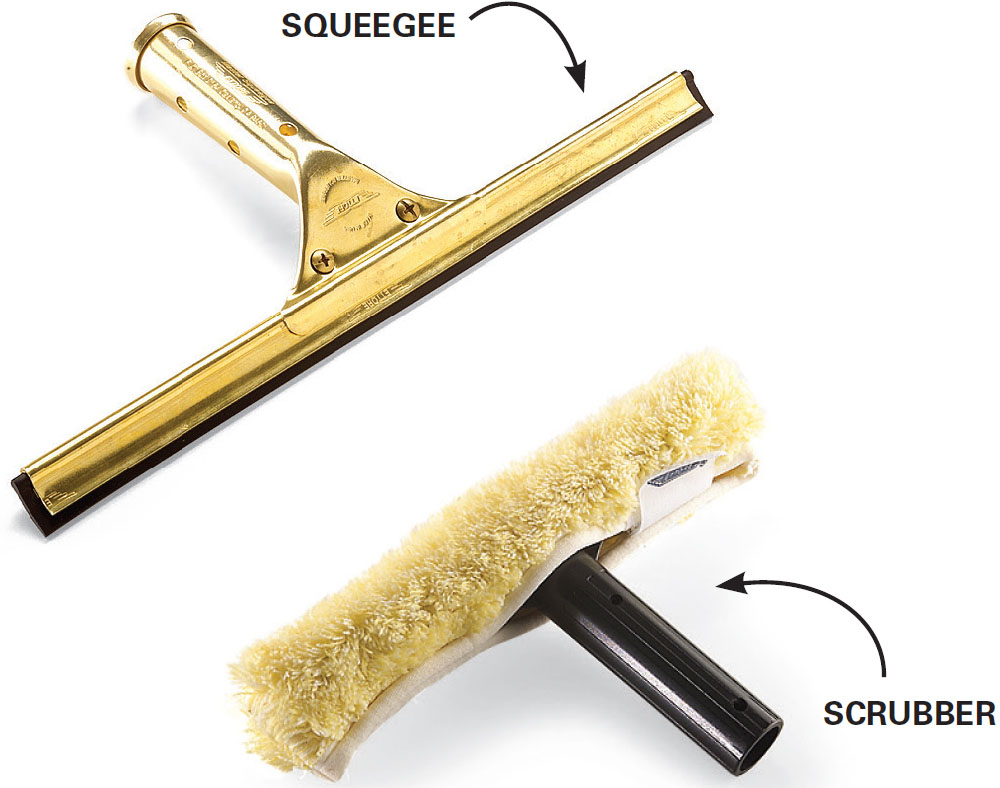
Wash your windows the fastest way with crystal-clear, streak-free results. The keys to success are buying a good squeegee and keeping it fitted with a sharp, new rubber blade. A high-quality squeegee will have a metal frame and a replaceable rubber blade. The same high-quality window washing tools the pros use are readily available at home centers and full-service hardware stores.
You don’t need fancy buckets or special soap. Any large bucket will do. Just add a couple of gallons of water and about a teaspoon of dishwashing liquid and you’re ready to go. In warm weather, you’ll get a little more working time by using cool water. If you’ve procrastinated so long that you’re washing windows in below-freezing temps, add windshield washing solution until the water doesn’t freeze on the glass.
Scrubber or sponge? It’s up to you. A scrubber works great and is worth buying if you have a lot of medium to large panes of glass. But a good-quality sponge is all you really need, especially if most of your windowpanes are small.


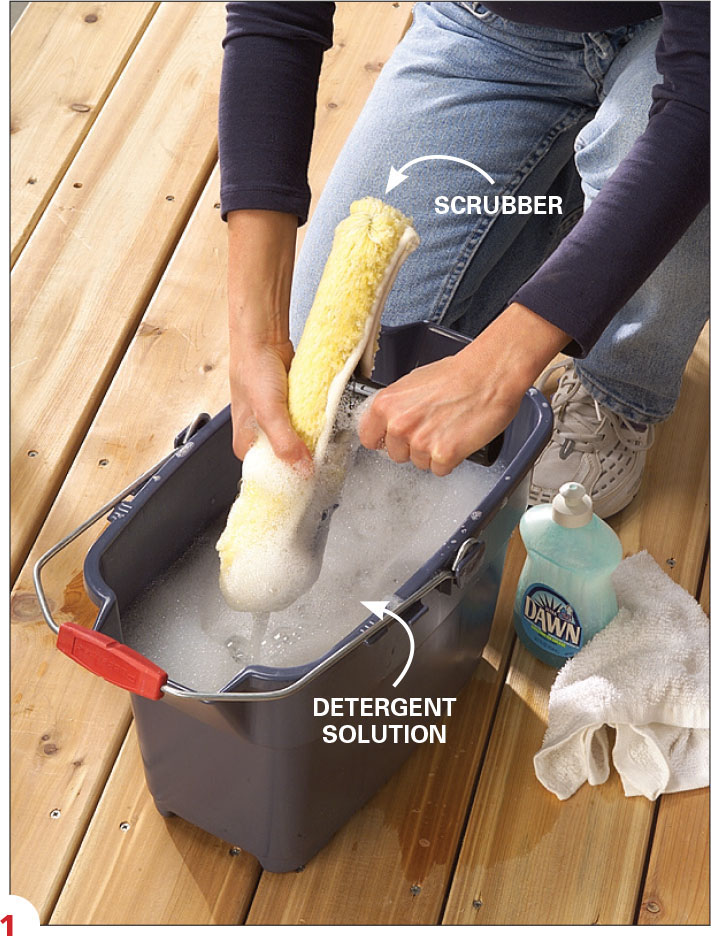
1. Dip the scrubber in a solution of 1 teaspoon dishwashing liquid to two gallons of water. Squeeze excess water from the scrubber.
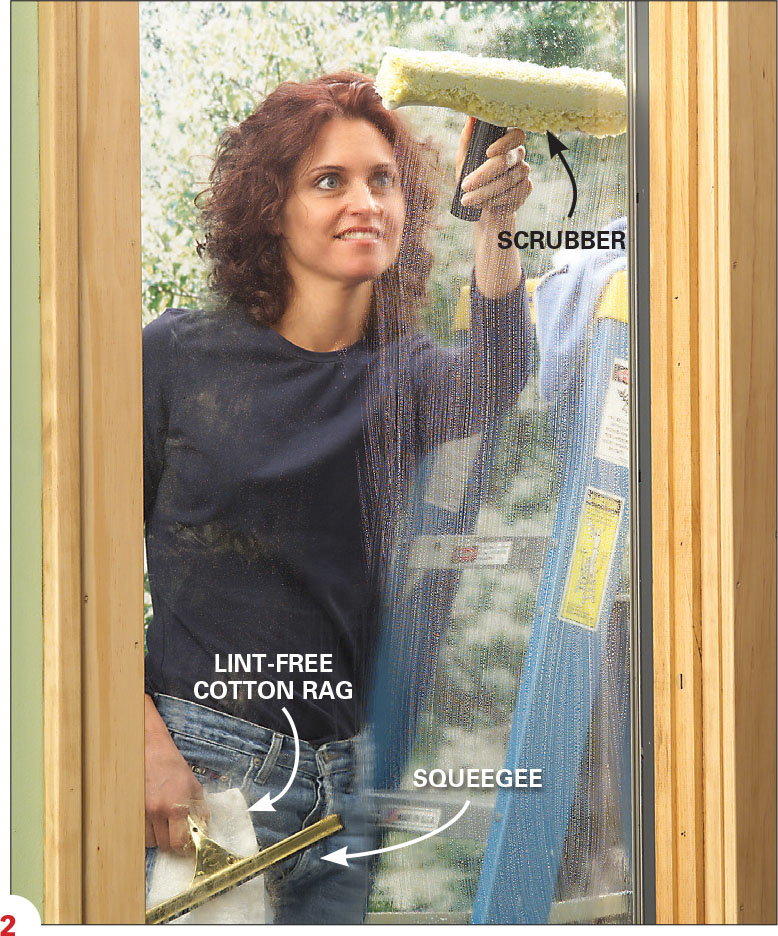
2. Scrub the glass, working at all angles to clean the edges. Make sure to cover every square inch of the glass.
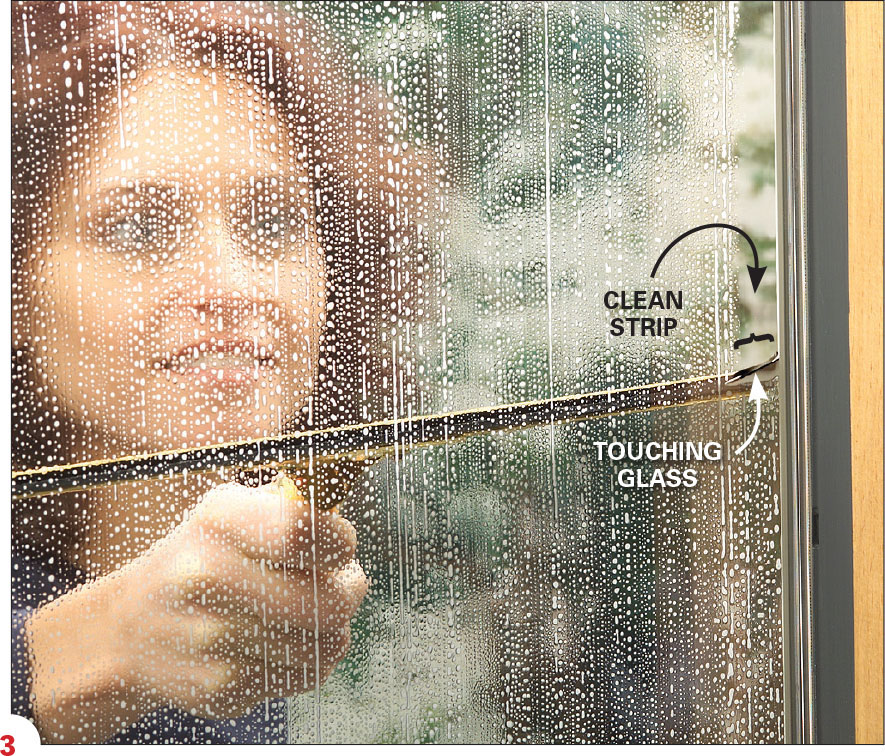
3. Tip the squeegee so that only the corner contacts the glass. Then, starting at the top corner of the glass, clean a narrow strip of glass from top to bottom on one side. This clean strip makes it easier to start the horizontal strokes.
“Fanning” techniques used by pros take practice to master. Instead, the method we show allows you to get great results immediately. We’re moving the squeegee horizontally across the glass (Photos 4 – 6), but vertical strokes will work too. If you work vertically, angle the squeegee to direct excess water toward the uncleaned area.
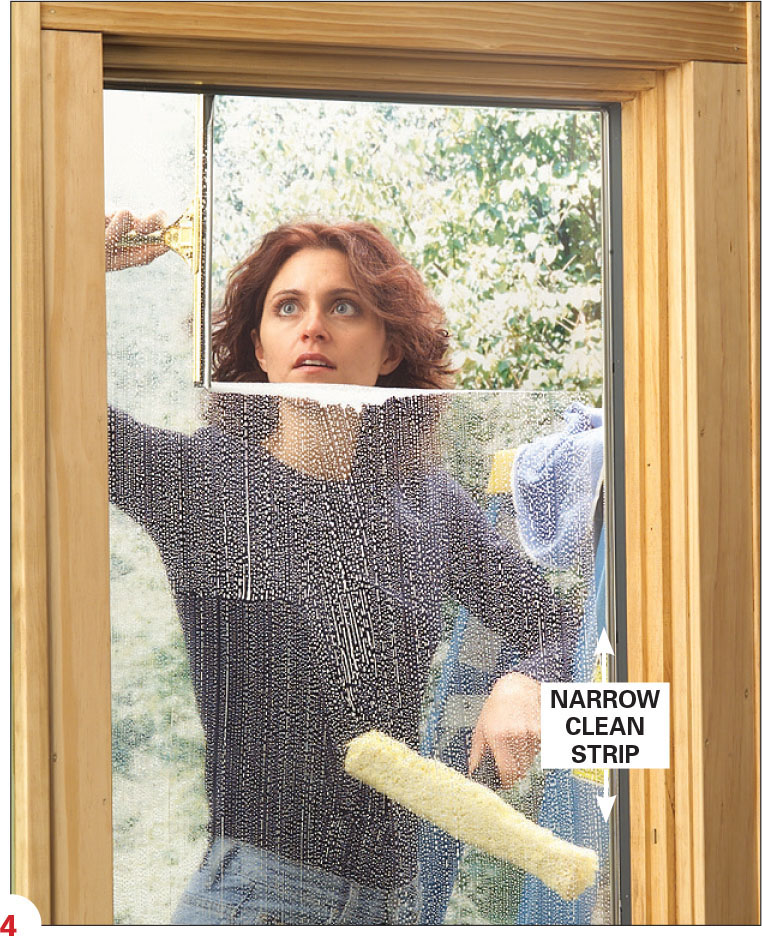
4. Squeegee across the top. Press the squeegee blade against the glass in the upper corner and pull it steadily across the window. Concentrate on keeping the top of the squeegee in contact with the top edge of the window.
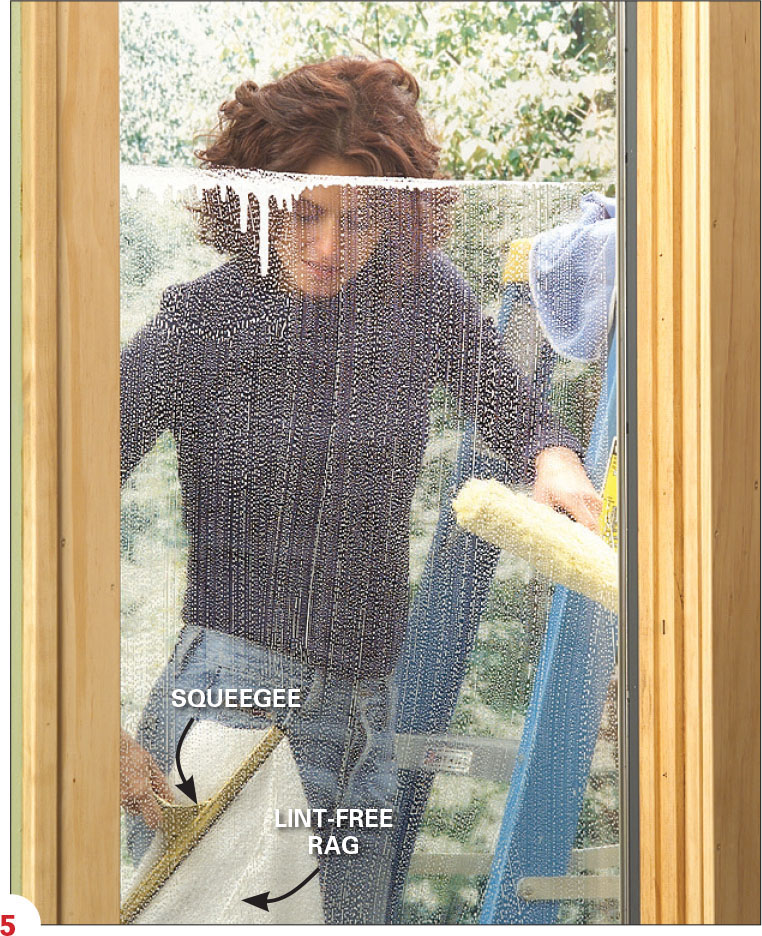
5. Wipe the blade of the squeegee on the clean towel in your front pocket or wipe it across the scrubber to remove dirt and excess water.
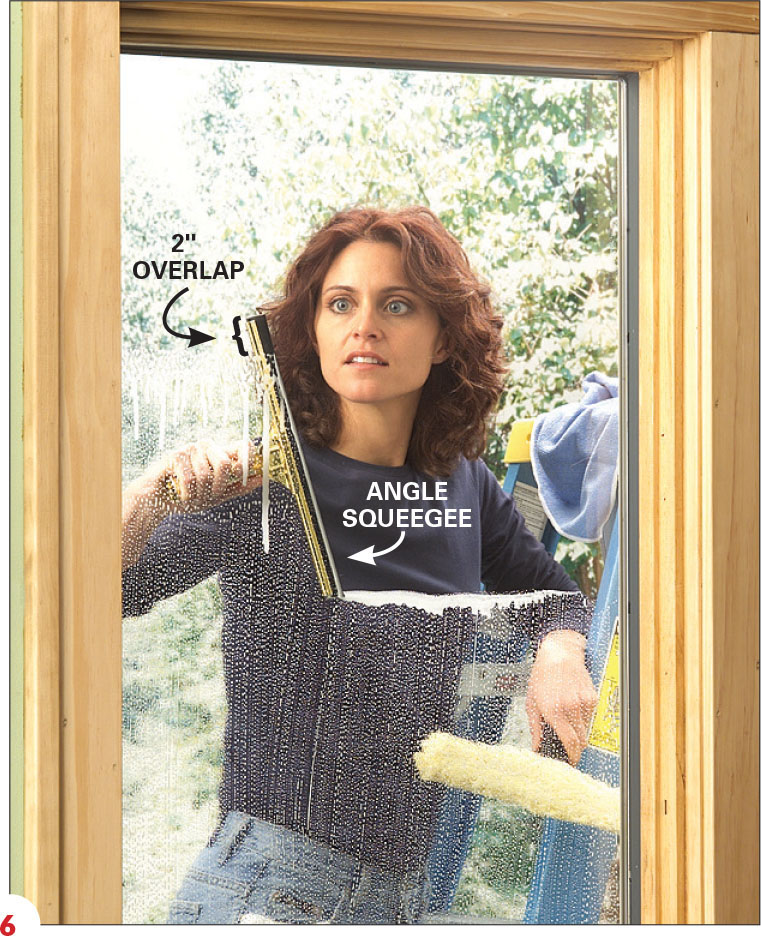
6. Work down the window. Begin again, with the top of the squeegee overlapping the previous stroke about 2 in. Pull the squeegee across the window at an angle to direct excess water down. Wipe and repeat.
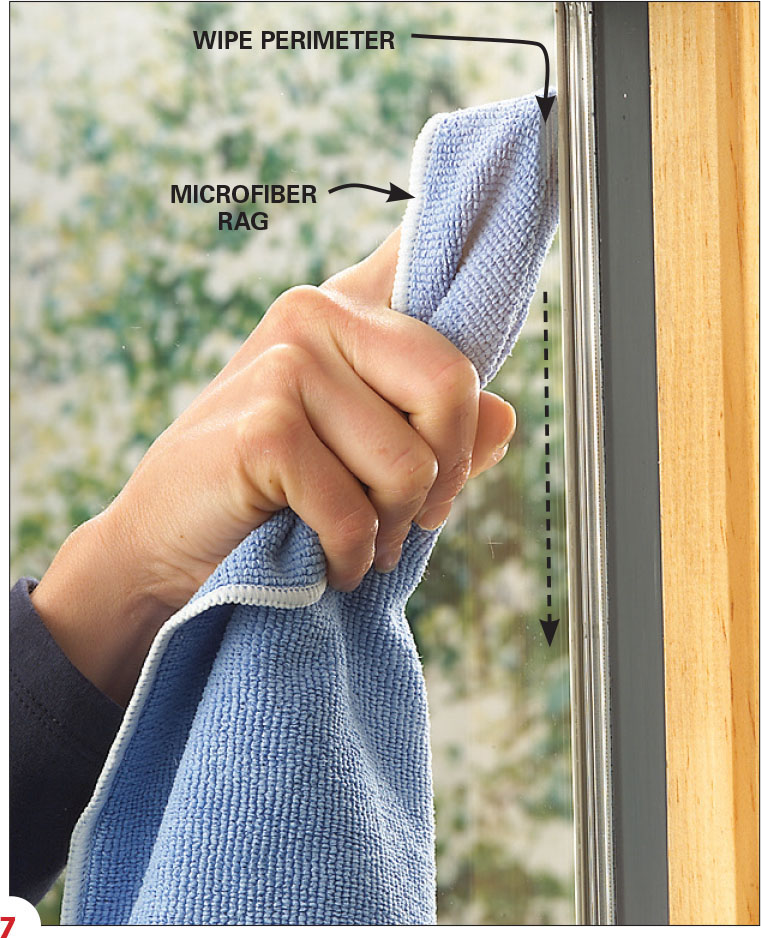
7. Use the rag in your pocket to wipe up excess water along the bottom edge of the window. Then poke your finger into a dry spot on a separate lint-free rag and run it around the perimeter of the window to remove any remaining suds. Wipe off any streaks using a clean area of the lint-free rag. Change rags when you can’t find any fresh, clean areas.
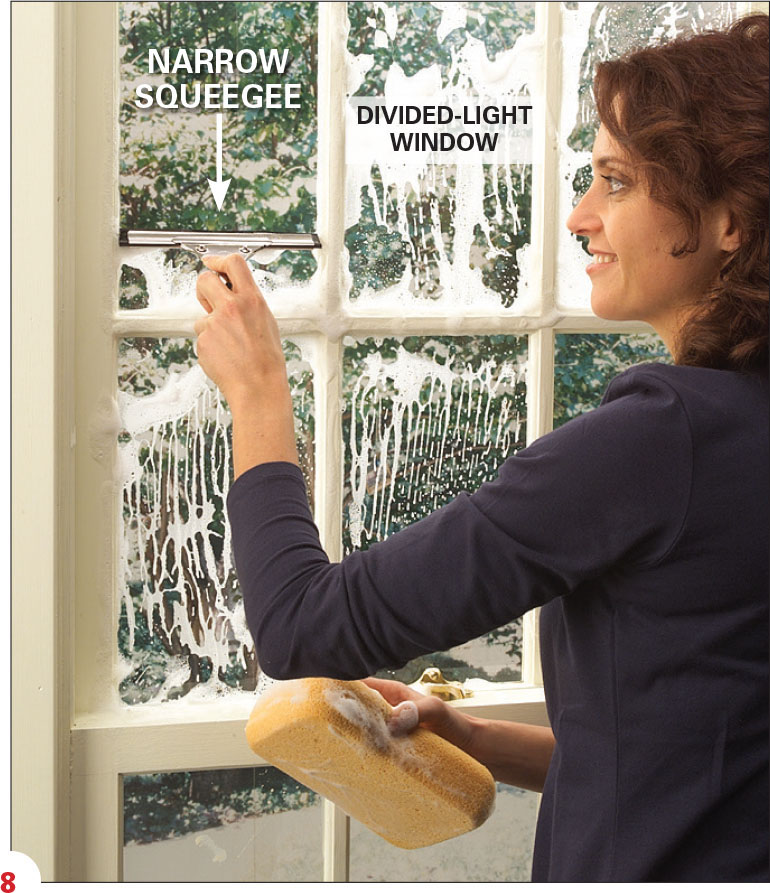
8. You can use a squeegee inside the house, too. Wash divided-light windows with a sponge and a small squeegee. If you can’t find a small enough squeegee, you can cut off a larger one to fit your glass size. Scrub the glass with a wrung-out sponge. The key is to squeeze most of the soapy water out of the sponge to eliminate excessive dripping and running. Then use the tip of the squeegee to clear a narrow strip at the top (same technique as Photo 3). Pull the squeegee down and wipe the perimeter. Keep a rag in your pocket to wipe the squeegee and quickly clean up soapy water that runs onto the woodwork. Use a separate clean rag to wipe the perimeter of the glass. New microfiber rags (Photo 7) work great for window cleaning.
How to change your squeegee blade
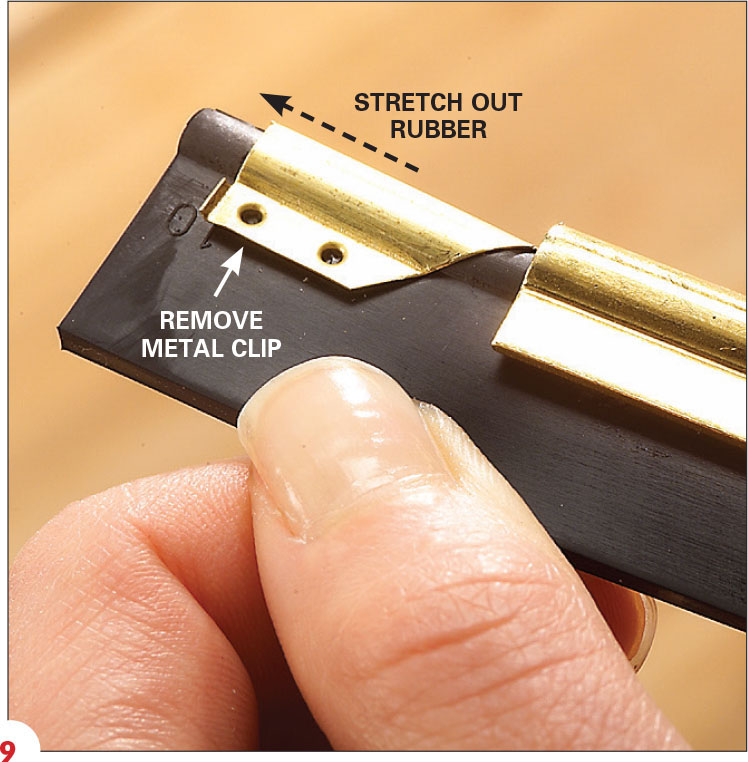
9. To remove the old blade, grab the end of the blade and stretch it out to expose the metal clip. Slide the clip off. Then slide the blade out the opposite end. Blades without clips are held by screws and the clamp on the handle.
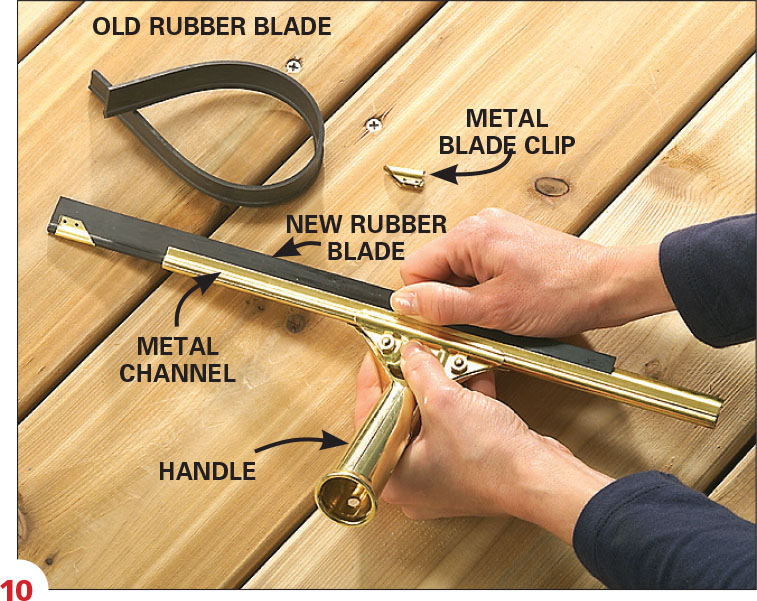
10. Install the new blade. Slide the new blade into the metal channel. Stretch it as in Photo 10 and reinstall the metal clip. If necessary, cut the end of the blade to leave 1/8 to 3/16 in. protruding from the channel.
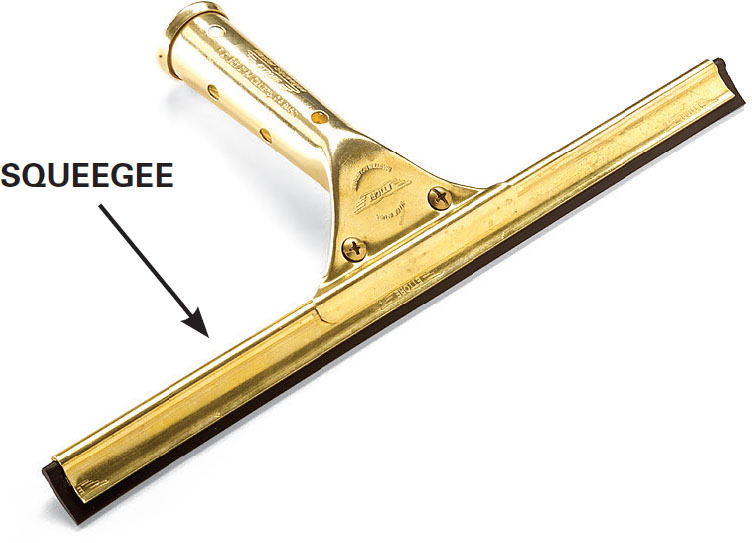
Tips for hard-to-clean windows
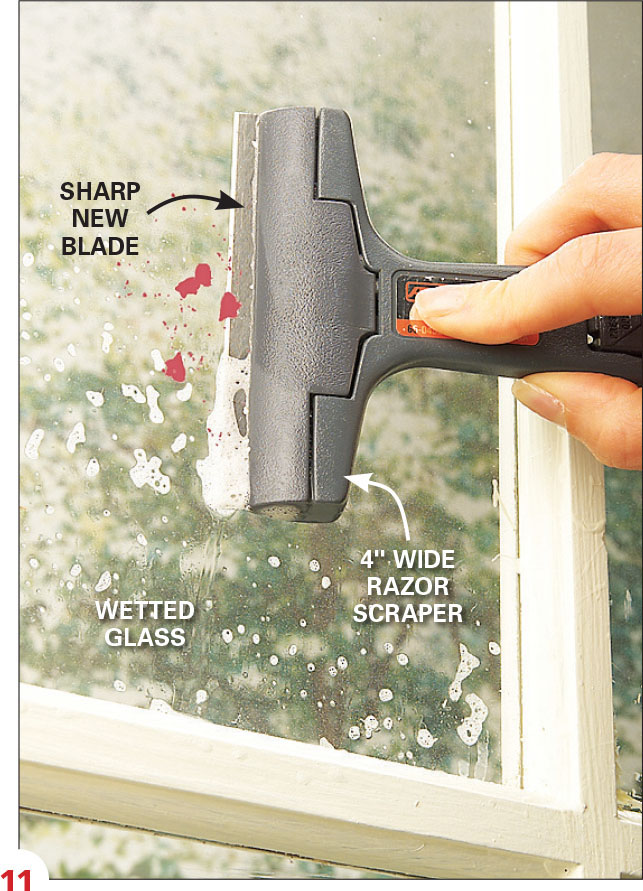
11. The razor blade solution: Remove paint specks and labels with a razor blade mounted in a holder. Always use a new blade to avoid scratching the glass. Wet the window first and push the blade across once. Rinse the blade and repeat on the next section to avoid trapping debris under the blade that could scratch the glass. Don’t use a razor blade on tempered glass.